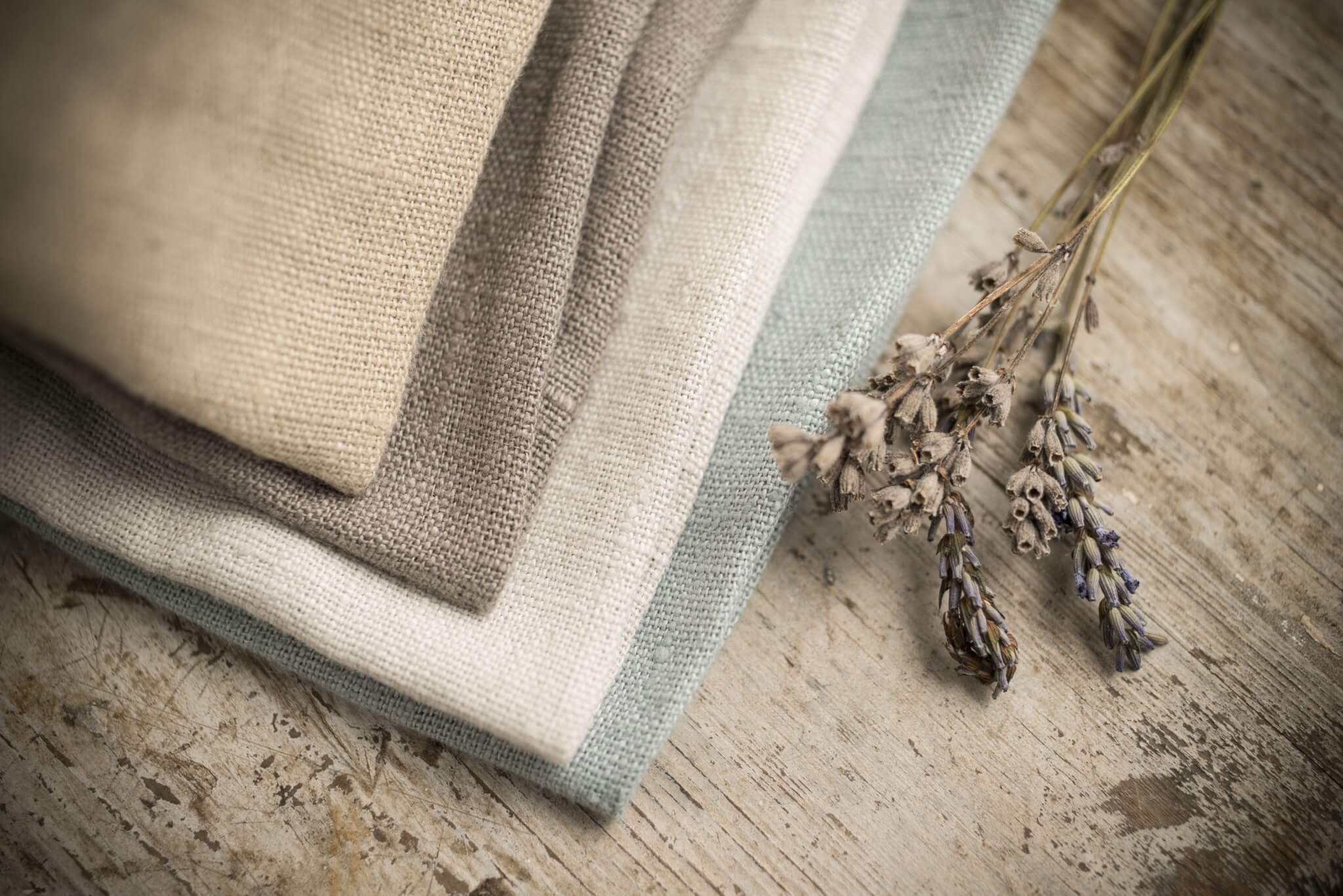What Is Linen Fabric?
We’ve talked about how to care for it, but what is linen fabric? Understanding the specifics of this unique textile, as well as the types of products that it’s commonly used to make, is integral to proper care practices. The more that you know about what makes linen so special in the first place, the more you’ll want to take care of your linen items in the best way possible. And to help, we’ve put together this quick guide to the properties and benefits of linen, including its storied history.
Where Linen Comes From
Linen has been a popular textile for thousands of years, and is considered to be one of the oldest fabrics in the world. Made from the stalks of the flax plant, linen fabric is highly durable, which has allowed people to dye it and use it in various applications throughout history. Early evidence of linen fabric made from weaving and dying flax fibers can be traced everywhere from prehistoric caves to Egyptian burial tombs—and in fact, experts say that linen was so valuable in ancient Egypt it was even sometimes used as currency.
While it’s used quite often for clothes, linen fabric is a mainstay of home décor items like bedding, tablecloths, and reusable napkins. That’s because flax fibers can easily stand up to frequent use, softening gradually over time and maintaining their quality construction so long as proper care practices are followed.
Notable Linen Properties
It’s the unique linen properties that can be thanked for why this fabric has endured as a mainstay of the textile industry for so many centuries. These include:
- Durability and tensile strength
- Quick drying capabilities and resistance to moisture
- Slightly silky texture that softens with use
- Low elasticity
- Doesn’t hold on to heat and cold
These properties lead to some pretty distinctive benefits. For instance, because linen doesn’t hold on to temperatures in the air, it’s inherently breathable and an ideal bedding fabric for those who live in extremely warm or cold climates. And while it’s durability means that it doesn’t flow quite so freely as other fabrics, it also means that it can stand up to long-term use and is able to lay flat and firm. Interestingly, the same features that make linen so durable also means that it cannot create lint and that it actually gets even more supple with use and cleanings.
4 Types of Linen
There are more types of linen than you might think. These four varieties represent the common linen fabrics for use in clothing and the home, and each have their own characteristics and benefits.
- Damask linen. Damask linen is a standard fabric for ornate tablecloths, since this fabric offers the strength of linen with the subtle beauty of something a lot more delicate.
- Closely-woven linen. Close-weaved linen is often called sheeting linen, and is popular for both apparel and bedding since it is remarkably soft.
- Loose weave linen. This type of linen isn’t quite as durable as other types, though it is highly absorbent. It comes in many varieties, and is sometimes blended with cotton for garments.
- Plain weave linen. Plain weave has a natural checkered pattern and is readily absorbent, which is why you’ll find it used a lot for reusable napkins.
Trust Linen Care to Cameo Cleaners
Linen fabric does its best when it’s cared for by a professional. At Cameo Cleaners, we offer reliable linen services that keep tablecloths, bedding, and other linen items looking their best for years—all while using special techniques to protect the flax fibers and keep the fabric intact. We’re always accepting new clients, so schedule your first pick-up today!

